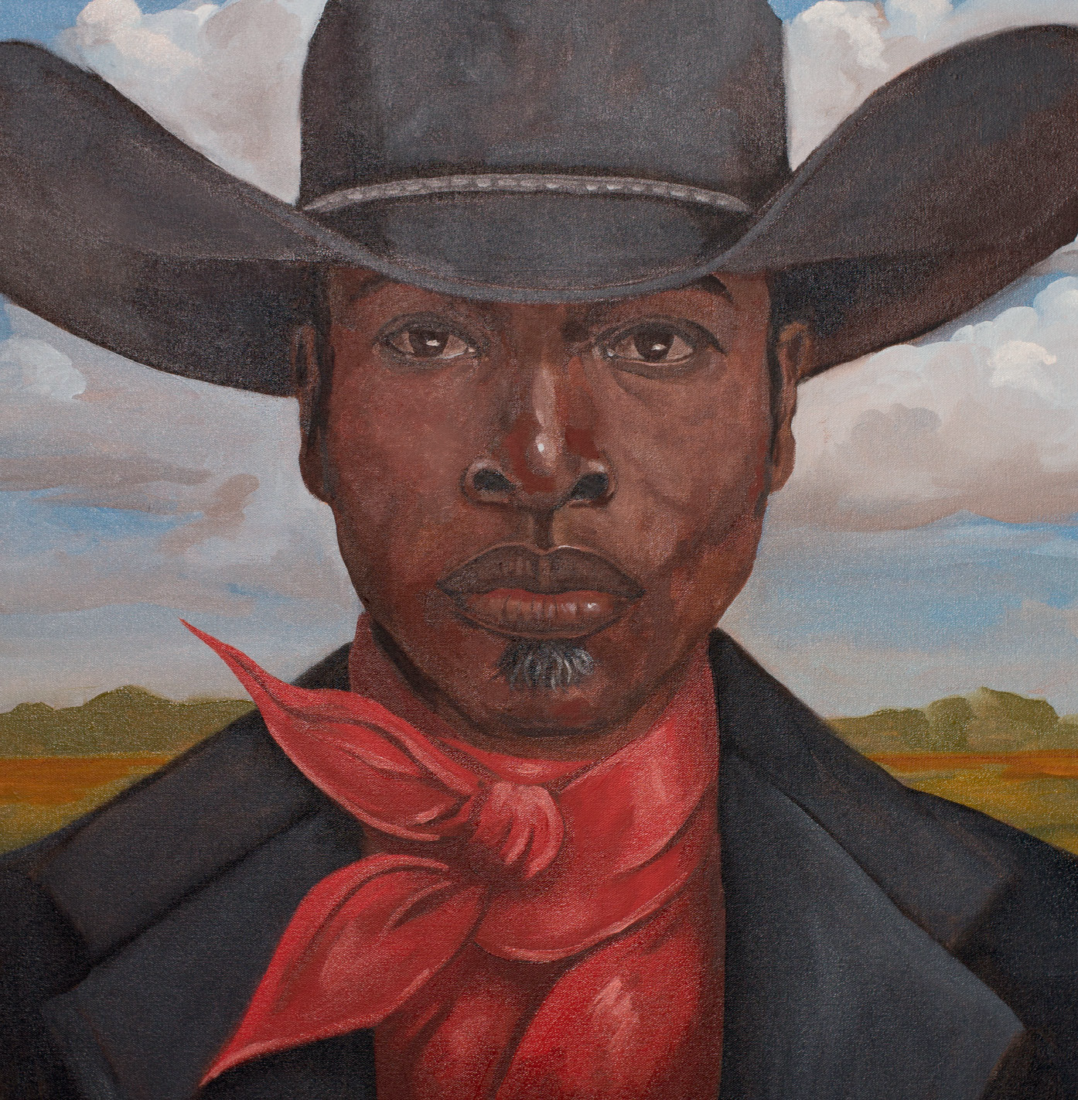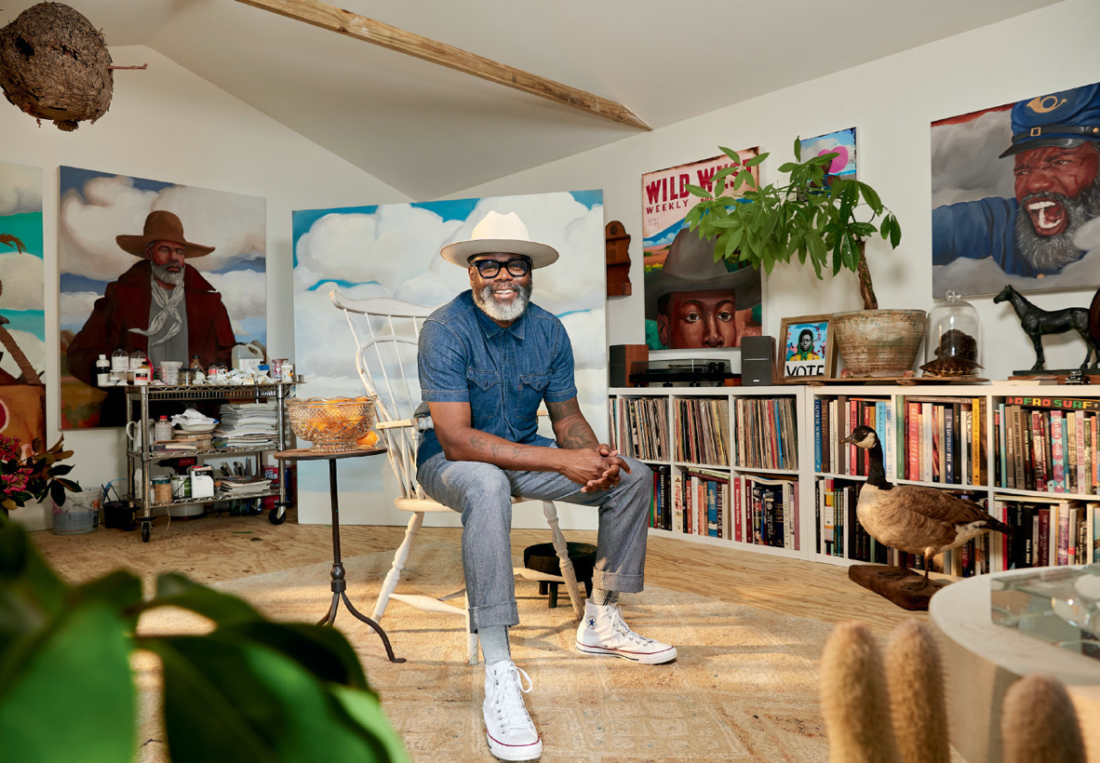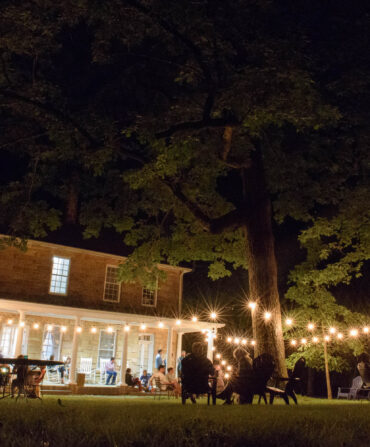As a child, Cedric Smith loved Western movies. Seeing cowboys conquer the terrain on majestic horses made him want to ride alongside them. But in those films—and largely across pop culture—he never saw Black people. As an artist, he aims to address that historic lack of representation.
In his color-saturated acrylic and oil paintings, for instance, Smith re-creates advertisements for the likes of whiskey and high-end fashion brands with Black people. And he plays with Southern Americana by placing old photos of Black people that he finds at thrift stores against lush backgrounds of magnolias, cotton, and peaches. “I love stuff from the past, especially since there aren’t a lot of old images of American Black people,” Smith says. “I have boxes of old photographs that people gave away or threw away. It’s amazing to me that people have pictures of their family and don’t keep them.”
Smith, who is fifty-two, was born in Philadelphia but spent most of his life in Lithonia, Georgia, where he lived with his mother and younger sister. He had an early affinity for art, but a devastating event in his teen years sparked the initial flicker that lit the flame of his painting career. When Smith was a high school freshman, a few of his friends committed an armed robbery, unbeknownst to him. Police arrested all the boys after school one day, even though Smith wasn’t involved. He spent a year in juvenile detention.
“I used to see so much talent when I was locked up,” Smith recalls. “These guys could sing, some were mathematicians—it blew my mind….It’s not to make excuses for all of us, but sometimes you fall along the path that’s before you at that time. That’s why with my art, I’m always trying to show positive portrayals of Black people.”

After his release, Smith spent the next few years teaching himself to paint in his free time, doing odd jobs and apprenticing as a barber. One of his clients was the world-renowned painter William Tolliver, who invited Smith to see his studio. For the first time, Smith realized he could make a living as an artist. He put in his two-week notice at the shop and never looked back. Since then, his work has appeared in exhibitions at such esteemed venues as Curtiss Jacobs Gallery in New York, Fay Gold Gallery in Atlanta, and Charlotte’s Mint Museum, and it hangs in the permanent collections of Hartsfield-Jackson Atlanta International Airport, Coca-Cola, the New-York Historical Society, and other institutions.
For Smith, painting offers the kind of freedom he saw in those Hollywood cowboys. Lately, at his studio in Macon, Georgia, he has been working on a series depicting them. In every collection, Smith does a self-portrait. In one piece, he rests his hand on a revolver, a brilliant blue sky behind him. Hanging on the wall next to that one, he’s dressed in denim on the back of a horse. On the opposite wall, he’s a Civil War officer shouting commands, his head surrounded by billowing gray-blue smoke. (The paintings will be featured in a solo exhibition at the University of Alabama’s Paul R. Jones Museum, from October 7 to December 17.) “As a child, I assumed there weren’t Black cowboys, and then later I learned about Bill Pickett,” Smith says. “Whenever I learn something new, I wonder how many other people don’t know that. That’s how it starts.”

A student of life, Smith has lined the back wall of his studio with shelves of inspiring books whose topics range from Lowcountry rice farming to various species of flora. Treasures such as turtle shells, dried flowers, and animal skulls in bell jars sit on top. The more books in which he finds faces that look like his, the more he is driven to paint. “I’m using old photographs to talk about modern issues,” he says, including hot-button topics like voting, school shootings, and reproductive health care. “I’m just a sponge, and every now and again, something or somebody squeezes me out.”
But he also wants to paint Black people back into the history from which they’ve been excluded, for the next generation—motivated by a desire to influence young people who simply need to see new possibilities for themselves, as he once did. “A lot of Black kids feel like America has disowned or doesn’t care about them,” Smith says. “As I see what we’ve contributed in America, maybe it will help steer them in another direction, to see how valuable and great we were and still are.”








